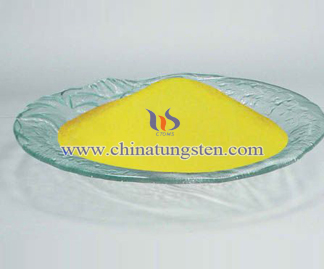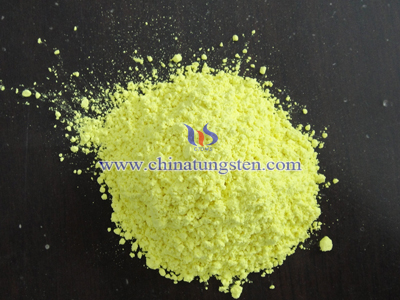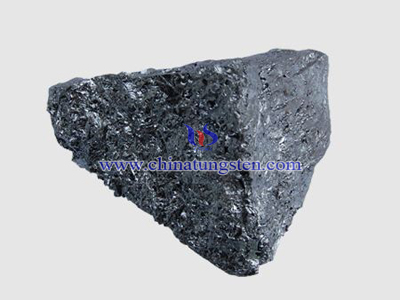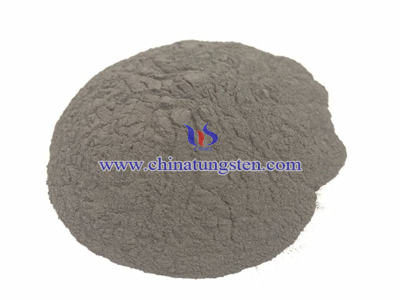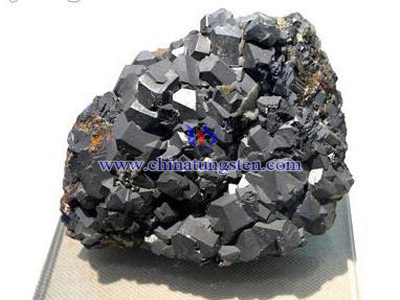dopés de terres rares de wo3 photocatalyseur
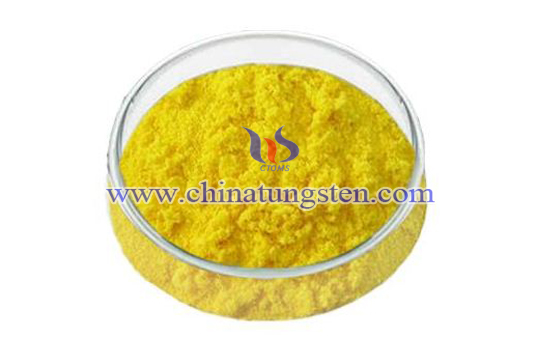
Numerous studies have shown that doping is an effective way to improve tungsten trioxide photocatalytic activity. Rare earth element has a special f shell electron structure, which determines that it can produce more internal electronic configuration; and, it generates an oxide having a polymorph, adsorption selectivity, good thermal stability and electronic conductivity and other advantages, and widely used in optics, electronics and catalyst.
It is generally believed that the photocatalytic activity of photocatalyst is a joint decision of its ability to absorb light, charge separation and transfer efficiency to the substrate, the stronger the ability of WO 3 to absorb the light, the higher photocatalytic reaction the activity.
Yttrium (Y 3+ ) doping can make WO 3 spectral response expanded to the visible region; and, XPS analysis showed, Y 3+ doped can bring increasing of oxygen vacancies on the catalyst surface; in visible radiation, photocatalytic activity of tungsten trioxide doping 0.05% Y 3+ has 1.7 times of the oxygen evolution of the undoped.
Europium (Eu3 +) ion doping can expand WO 3 light response range, prompting WO 3 absorb more visible light, thereby enhancing its photocatalytic activity; However, excessive europium oxide doped prevents WO 3 light absorption, thereby affecting WO 3 photocatalytic activity. Further, europium also improves the catalytic activity of WO 3 photocatalyst by increasing the adsorption amount of reactants, which is based on: the early reactant adsorption and increased efficiency of adsorption photocatalytic degradation reactions is very important prerequisite.
Small amount of lanthanum ion (La 3 + ) doping can improve the photocatalytic activity of the tungsten trioxide, and inhibit tungsten trioxide transferring from monoclinic to hexagonal during the calcination process. At the same time, the doping amount of lanthanum is required not too much, because when the doping concentration is too large, too much La 3+ will generate a new recombination centers to accelerate the complex and reverse reaction of photogenerated electrons and holes, thereby reducing the photocatalytic activity of the tungsten trioxide.
Terbium (Tb 3 + ) ion doping can expand WO 3 light response range, significantly improve WO 3 for soluble dye Rodin Ming B photocatalytic degradation rate and corrosion resistance. Research and analysis can be caused, Tb 3 + doping improves WO 3 crystallinity and increased absorption in the visible region and other factors, because the increase of the degree of crystallinity can accelerate the photo-generated electrons and holes in WO 3 propagation velocity, thereby reducing the electron - hole recombination probability and improve the quantum yield.
Light response range of gadolinium (Gd) and TiO 2 co-doped WO 3 photocatalyst may be raised, experiments also showed that its adsorption of soluble Rhodamine B (RB) has been improved, thus contributing to the WO 3 RB photocatalytic activity and light stability degradation will be significantly improved.
In the cerium (Ce) doped WO 3 photocatalyst, Ce doping leads to the adsorbed oxygen content on the surface of WO 3 catalyst increased, the lattice oxygen content reduced, which is oxygen vacancies increased; Meanwhile, since the positively charged oxygen vacancies, the excessive oxygen vacancies may neutralize charged free electrons, thereby reducing the content of free electrons; Furthermore, the increase of the surface oxygen vacancy content improve the electronics and surface adsorption material oxidation reaction rate, which increases the rate of migration of the electronic interface, making the surface of Ce / WO 3 catalyst to produce more • OH and • O 2, thus greatly improving the photocatalytic activity of the sample. This Ce / WO 3 can not only help curb the electron - hole recombination process, but also as the presence of internal Ce, it is easier to be excited by visible light, and has an excellent performance on the light water splitting and oxygen evolution aspects.

